-
Participatory Theatre and the Urban Everyday in South Africa: Place and Play in Johannesburg
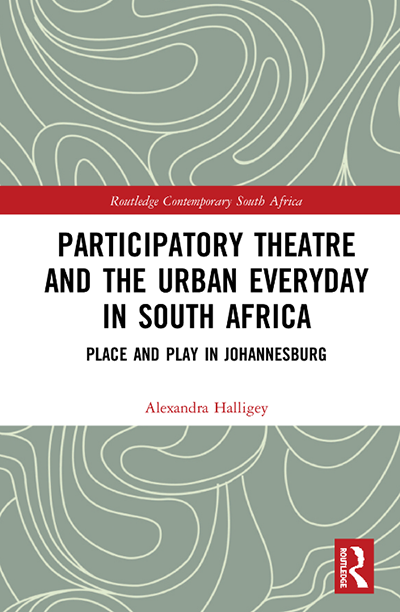
by Alexandra Halligey
Published by Routledge Available for purchase here through Loot at a price of R650.
-
Cycling Cities: the Johannesburg Experience
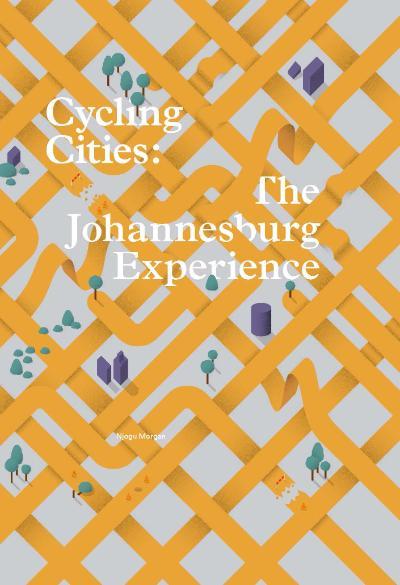
by Njogu Morgan
Published by Foundation for the History of Technology Available for purchase here at a price of €20.
-
Densifying the City: Global cases and Johannesburg
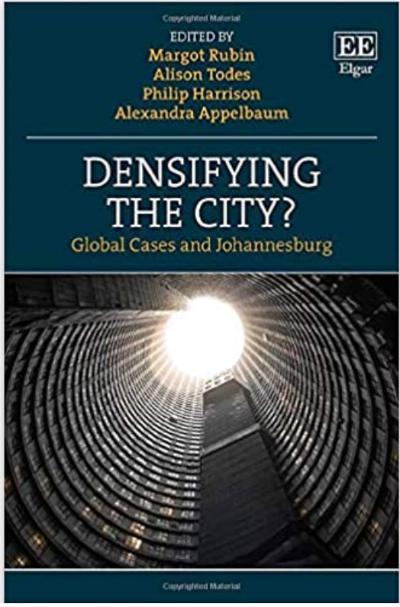
edited by Margot Rubin, Alison Todes, Philip Harrison and Alexandra Appelbaum Published by Edward Elgar Publishers.
First chapter available here and available for purchase at List price of GBP100 here.
-
BRICS Cities: Facts & Analysis
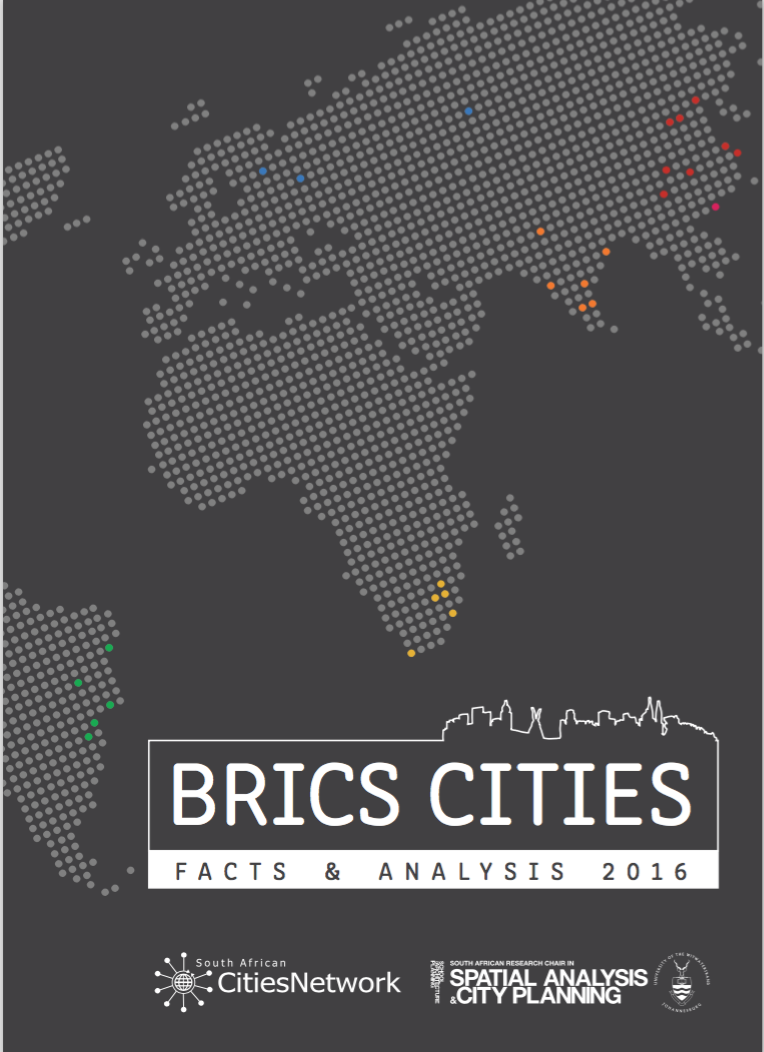
Lead authors: Prof. Philip Harrison and Dr Yan Yang
Date: February 2017
BRICS Cities: Facts & Analysis is a compendium of research produced through a partnership between the South African Cities Network (SACN) and the South African Research Chair in Spatial Analysis and City Planning (SA&CP) in the School of Architecture and Planning at the University of the Witwatersrand. It presents key general and thematic descriptive and comparative information about urban growth and development in the five BRICS states: Brazil, Russia, India, China and South Africa.
The comparative analysis includes a section relating to cities in Africa, while the detailed Factsheets cover thirty-one of the largest BRICS cities. BRICS Cities provides a first-of-its-kind research base to inform ongoing sub-national BRICS research and policy consideration.
Recent reports on urbanization point out that over the next 20-30 years, almost all of the expected growth in the world population will be concentrated in the urban areas of the less developed countries of which a significant 42% will occur in cities in BRICS countries. Despite the fact that the distribution of the urbanization figures will be highly unequal between the different countries, considering the currently high levels of urbanization in Russia and Brazil and the extremely low levels (just over 35%) in India, the realities of large scale urbanization can and no doubt will have substantial impacts on the material conditions of urban life, governance, service provision, social relations and the environment. There has also been, and will continue to be, the expansion of networks of all kinds far beyond designated urban boundaries. In some cases, these challenges and the expanding boundaries have been met with additional layers of government, innovations in policy-making, and the reconfiguring of relationships between urban actors.
However little is known in a comparative sense around some of the most important sites and cities in the BRICS countries , and insufficient research has been undertaken to learn from the differences that have been identified. The SACN and SA&CP, in line with our mutual interest around the nature and shape of urbanization and urban processes in South Africa and in BRICS countries, have developed a compendium of comparable information around key cities in the BRICS countries. BRICS Cities will serve as a useful reference of important base line information but also offers comment on the state of key areas of shared concern: innovation-driven economies, transport and mobility, and green energy. Furthermore, the publication provides a careful analysis of these factors in a comparative and relational framing.
View the full report: BRICS Cities: Facts & Analysis
-
Transport and Urban Development: Two Studies from Johannesburg

Title: Transport and Urban Development: Two Studies from Johannesburg
Authors: Dylan Weakley and Geoffrey Bickford
Date: April 2015
This booklet contains two research pieces which offer evidence-based perspectives on transport and its relationship to urban form. The first, by Dylan Weakley, explores the relationship between population density and modes of transport in Johannesburg using data from both the Gauteng City Regional Observatory (GCRO) Quality of Life Survey conducted in 2011 and the National Population Census of the same year. The research confirms a clear relationship between density and use of public transport but, mportantly, reveals that this relationship holds across all income groups. The second piece, written by Geoffrey Bickford, helps us understand better the relationship between new transport infrastructure and other urban development processes. It explores the impact that the Diepkloof Bus Rapid Transit (BRT) station in Soweto is having on development in adjoining areas. The research confirms that the BRT is having a positive impact on the access of local residents to the wider city but does indicate that the impact of the BRT on the built form of neighbourhoods may be evolving only gradually, and will have to be analysed over a longer period.
Weakley, D., and Bickford, G. (2015). Transport and urban Development: Two Studies from Johannesburg. University of the Witwatersrand, South African Research Chair in Spatial Analysis and City Planning and the Gauteng City Region Observatory.
-
Urban Resilience Thinking for Municipalities
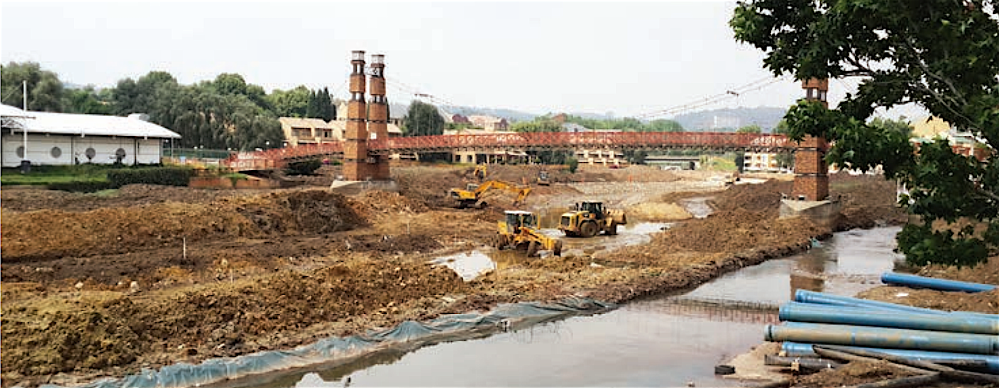
Title: Urban Resilience Thinking for Municipalities
Author: Philip Harrison, Kerry Bobbins, Christina Culwick, Tracy-Lynn Humby, Costanza La Mantia, Alison Todes, Dylan Weakley.
Date: 2014
Urban resilience is the 'new kid on the block'. Over the past few years the concept has rapidly gained a central place in spatial and urban planning policy in South Africa. This article is not designed as a 'manual' or 'tool box', but rather as a tool to promote urban resilience thinking.
The three-year funded programme at the University of the Wiwatersrand (Wits) was titled 'Urban Resilience Assessment for Sustainable Urban Development" and was developed with the specific intention of giving support to local government in South Africa. This was done with the recognition that municipalities have a potentially vital role in proactively managing processes of change.
Harrison, P., Bobbins, K., Culwick, C., Humby, T., La Mantia, C., Todes, A., and Weakley, D., (2014) Urban Resilience Thinking for Municipalities, a report as part of the Department of Science and Technology’s Grand Challenge on Global Change.
-
Resilient Densification: Four Studies from Johannesburg

Title: Resilient Densification: Four Studies from Johannesburg
Author: Alison Todes, Philip Harrison, Dylan Weakley
Date: 2015
Unlike most cities in the world, over the last 20 years Johannesburg has become more dense and more compact. This reflects the increased rates of rural-urban migration from the late 1980s as urbanisation controls collapsed, but also the relative success of Johannesburg’s economy and democratic-era policies to contain urban sprawl (such as the urban development boundary). The ending of apartheid regulations allowed a release in a pent-up demand for access to large cities with much of the movement directed to the three large metropolitan cities in Gauteng. Densification in the city has occurred in both planned and unplanned ways. In line with directions in planning internationally, post-apartheid planning has placed strong emphasis on urban densification and compaction. At the same time, however, market forces (both formal and informal) have driven densification in the city, in ways that are often unforeseen and sometimes contrary to city policies. In order to plan for further development and to respond effectively to the densification that has happened, and is occurring, research into the processes and effects of densification is clearly needed. In this work we use an “urban resilience lens” to investigate four forms of residential densification in Johannesburg, using four illustrative case-studies. We explore the effects that densification is having in the city, showing how diverse, complex and contingent it often is.
Todes, A., Harrison., P., and Weakley, D., (2015). Resilient Densification: Four Studies from Johannesburg, University of the Witwatersrand, South African Research Chair in Spatial Analysis and City Planning and the Gauteng City Region Observatory.
-
Changing Spaces, Changing City: Johannesburg after Apartheid
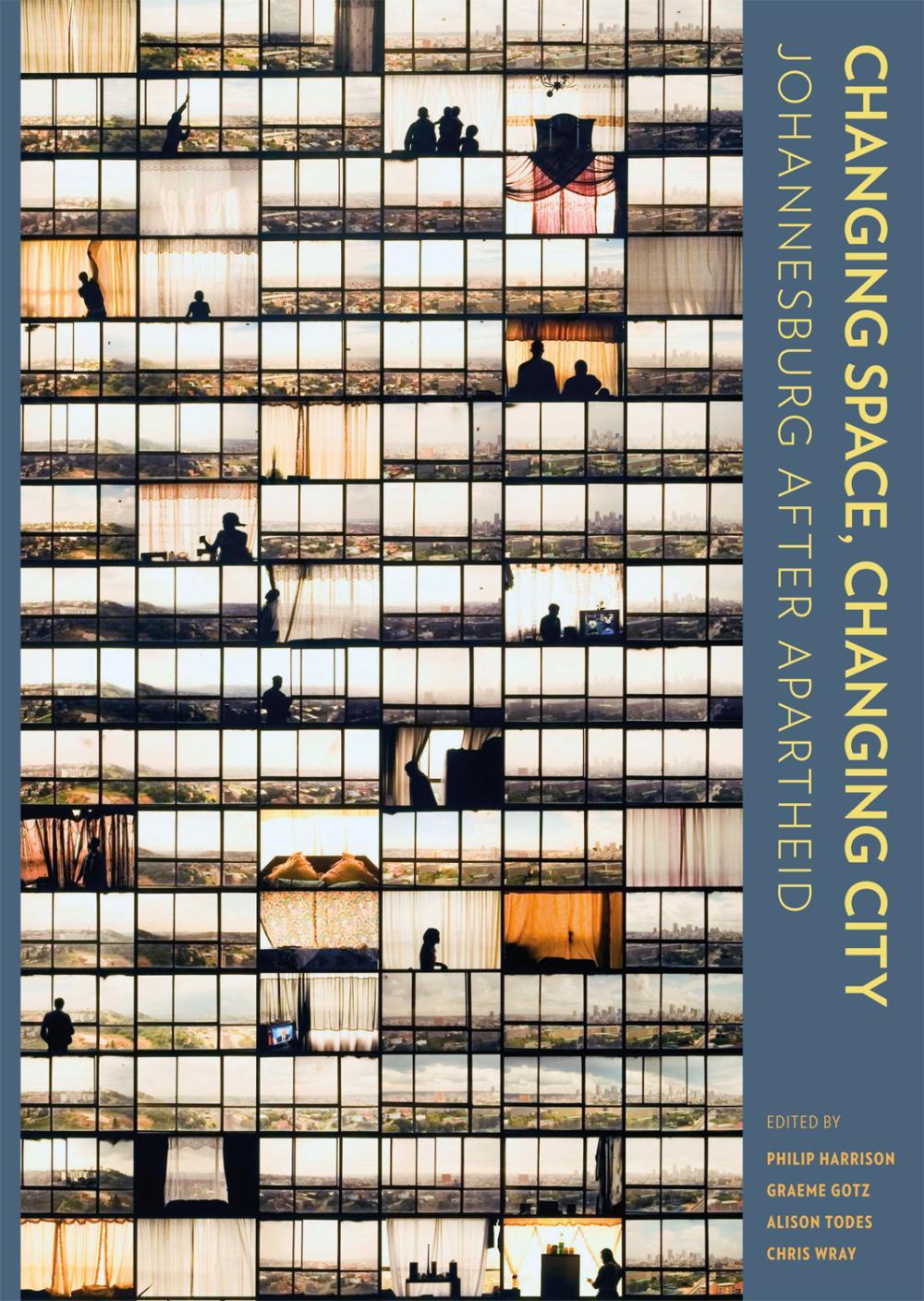
Title: Changing Spaces, Changing City: Johannesburg after Apartheid
Author: Philip Harrison, Alison Todes, Chris Wray, Graeme Gotz
Date: 2014
As the dynamo of South Africa’s economy, Johannesburg commands a central position in the nation’s imagination, and scholars throughout the world monitor the city as an exemplar of urbanity in the global South. This richly illustrated study offers detailed empirical analyses of changes in the city’s physical space, as well as a host of chapters on the character of specific neighbourhoods and the social identities being forged within them. Informing all of these is a consideration of underlying economic, social and political processes shaping the wider Gauteng region. A mix of respected academics, practising urban planners and experienced policymakers offer compelling overviews of the rapid and complex spatial developments that have taken place in Johannesburg since the end of apartheid, along with tantalising glimpses into life on the streets and behind the high walls of this diverse city.
The book has three sections. Section A provides an overview of macro spatial trends and the policies that have infl uenced them. Section B explores the shaping of the city at district and suburban level, revealing the peculiarity of processes in different areas. This analysis elucidates thelarger trends, while identifying shifts that are not easily detected at the macro level. Section C is an assembly of chapters and short vignettes that focus on the interweaving of place and identity at a micro level. With empirical data supported by new data sets including the 2011 Census, the city’s Development Planning and Urban Management Department’s information system, and Gauteng City-Region Observatory’s substantial archive, the book is an essential reference for planning practitioners, urban geographers, sociologists, and social anthropologists, among others.
Harrison, P., Gotz, G., Todes, A. and C. Wray (2014) Changing Space, Changing City: Johannesburg after Apartheid, Wits Press, Johannesburg.
-
Ruling the Underground: Governance and Agency in a Basement in Hillbrow
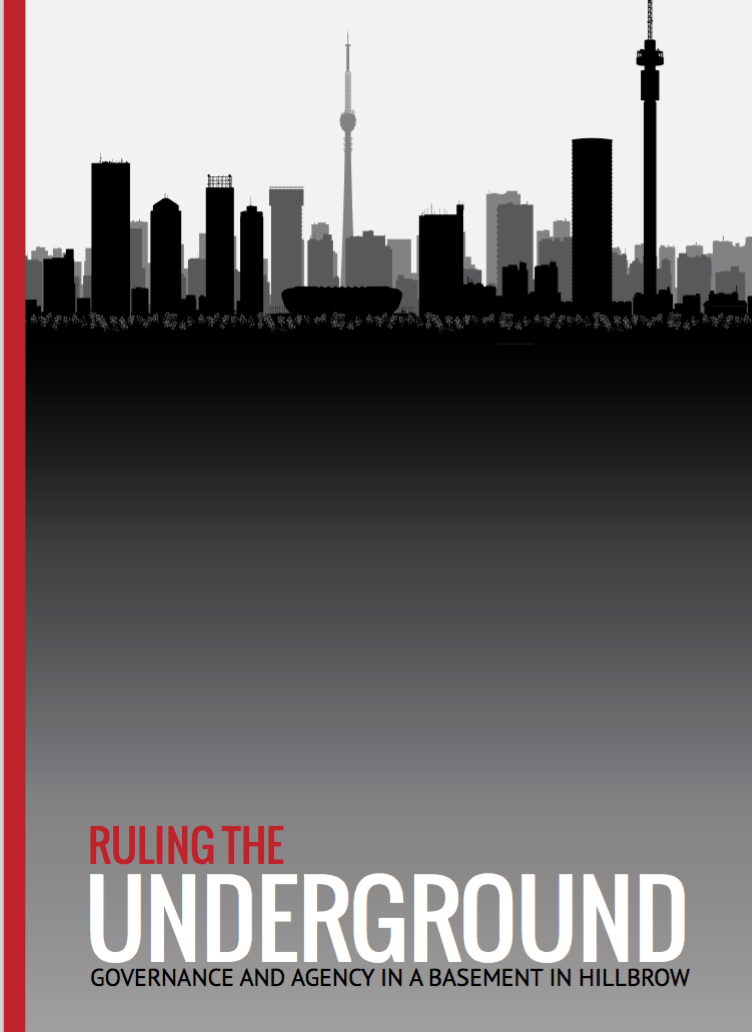
Author: Margot Rubin, Hayley Gewer, Morag Campbell and Jennifer van den Bussche
Date: July 2016
An unexpected answer a chance encounter, led to the discovery of the life and everyday experiences of people living and working in a basement in Hillbrow, Johannesburg. Unseen from the street level and only known to “insiders” who work and live in the inner city, the basement is used every hour of every day. It is home, work and leisure space, where the sacred and the profane sit side by side. Children are cared for, objects are assembled, taken apart or taken away, deals are made and prayers are offered; all to the steady rhythms of hammering, welding, singing and drumming that signal the hours, days, weeks and months that pass by.
This report outlines the informal governance relations and socially determined rules that allow for the creation of multiple purposes in a space that has been reterritorialised and repurposed. It also attempts to tell the story of life in a basement, considering its cycles, rhythms and beats within a space that simultaneously typifies the lived experience and working lives of many low-in- come people in Hillbrow. The basement affords important and invaluable opportunities for trying to understand a range of social and economic experiences and practices that take place within spaces that are informally regulated and hid- den. Thus far, much existing research has focused predominantly on everyday social and economic engagements and interactions that occur at street level, or in demarcated spaces such as markets. In these spaces performativity and agency are more visible and, as such, are better able to be scrutinised and controlled. By contrast, activities within the basements are hidden, and occur within spaces where the distinctions between formal and informal, regulated and unregulated, legal and illegal are even more blurred and difficult to understand than those observed above the ground. This report presents an argument that invisibility, being beyond the gaze of the state, is an invaluable asset for many poorer people. Such “invisibility” ensures that the basement dwellers and users can live and work outside of the rules, regulations and laws that would otherwise deny them income or shelter. However, it goes further and demonstrates that the invisible and the informal do not equate with the chaotic or anarchic, as is the case so often presented. It explains how the often complex, yet still enduring and supportive nature of the socially determined rules of operations and relationships, occur within such a space.
The report also speaks to the idea of reterritorialisation, yet moves beyond an acknowledgement that such a process does take place, to an investigation into exactly how spaces are repurposed and retrofitted for new uses. We assert that reterritorialisation is as much about the physical adaptation of the space and reconstructing its materialities, as it is about re-working the rules that govern its use. Thus there is an interlocking process whereby physical change is reinforced through new rules for the territory which, in turn, allow and support both the physical transformation as well as the new uses of space. One without the other would be impossible.
Ruling the Underground full report
-
Urban Film and Everyday Practice
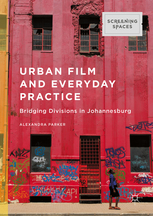
Title: Urban Film and Everyday Practice
Author: Alexandra Parker
Date: 2016
This book explores the ways in which films of Johannesburg assist residents of the city to bridge the divisions and inequalities of contemporary urban spaceExamines the relationship between Johannesburg and materiality, identity, mobility, and crime to deconstruct the complexity of the city and to understand the complicated nature of residents’ interactions with the city Delves into the reception of Johannesburg urban films in the environments of their locations and narratives. While urban films often reinforce spatial stereotypes, they can also produce a resistant reading that helps transgress spatial boundaries, especially in in urban contexts where spatial inequalities and urban divisions are stark. This book reveals the nature of urban film's influence through the lens and space of Johannesburg.


